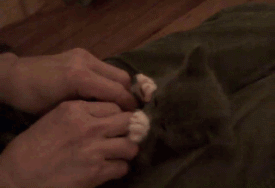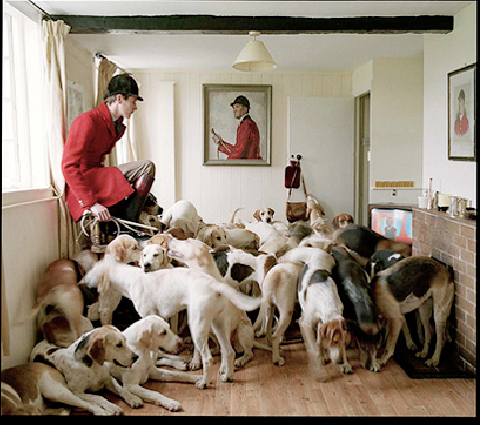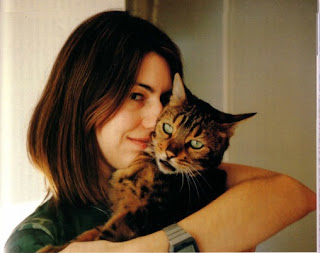
Monday, November 30, 2009
Sunday, November 29, 2009
Thursday, November 26, 2009
Wednesday, November 25, 2009
Tuesday, November 24, 2009
Monday, November 23, 2009
Finding a Westie in Ohio for my sister
Sunday, November 22, 2009
Saturday, November 21, 2009
Tara, Franny and Zooey
Friday, November 20, 2009
Thursday, November 19, 2009
Wednesday, November 18, 2009
an excerpt from the most touching interview with Morrissey I have ever read

Are you an animal person?
Oh, completely! I’m mystified by cats. I see a cat and I’m in a trance and the union begins . . .
So, do you have a cat?
I’ve had many, many, many.
But you’re on the road.
Yes, it’s — I’ve had many, and many have passed away.
That’s the worst part.
Horrendous, horrendous. It’s worse than a human passing away.
Is it?
Yes, it really is.
Why?
Because you feel the cat doesn’t fully understand. They’re looking to you, they’re relying on you to get them through this, and you can’t . . .
I’ve been in certain situations where I’ve had to terminate the life for the benefit of the cat and the pain is too much to bear. It’s insufferable. Because even as they get the final needle, they’re purring and they’re loving you and . . .
I know, it happened to me, my dog, too. It was awful, because they gave him the shot of ketamine, so he became paralyzed, but he was still conscious and he couldn’t . . . then I thought, oh God, now where’s his spirit, because he doesn’t understand what happened?
And he is just assuming that if he is sitting next to you, he’s going to be okay.
Was your cat maimed?
No, but he was very, very old, and he was arthritic, and he couldn’t go to the toilet properly and I would have to take him to the toilet, I’d have to do everything, but he was very, very happy, and as long as he was with me, he was thrilled to death. So, I held him at the last moment when they inserted the needle and, uh . . . I cried for hours and hours and hours. This sound came out of me, this sound of despair when he went, and I’d never heard it before.
Wow!
Because I thought I’d be — I thought I could completely handle his death and I’d be fine. I’d look after him, I’d make sure everything was okay, and I’d make sure that his transition was as easy and comfortable as possible. And I howled.
I mean, I still have moments where I grieve again, out of the blue — does that happen to you?
Of course! Of course! You miss your pets. You miss Sir Doo-Dah or whatever his name is . . . You miss them and you feel for them, and my cat was an incredible character. He wasn’t merely a cat, he was beyond human. He had the most incredible personality, an enormous personality, and as tough as, as they say, old boots, and I still miss him, I really still miss him. Sorry, I’m boring you stiff . . .
No! I want to talk forever.
Might not be long enough.
full interview here
Tuesday, November 17, 2009
Saturday, November 14, 2009
Friday, November 13, 2009
Wednesday, November 11, 2009
Remembrance Day 11/11

"Throughout the history of human conflicts, animals have been victims of war.
During World War I, dogs and pigeons were used to deliver messages between frontline trenches and further afield. Horses, donkeys and even elephants have been routinely used as beasts of burden, while a shocking array of animals – from bears to deer – have been kept as pets in the midst of battle.
Today, animals continue to be used in the battlefield to detect explosives, and thousands suffer and die each year in laboratories, infected with biological or chemical agents, or deliberately shot or otherwise damaged.
To commemorate all the animal victims, Animal Aid has issued a purple poppy, which can be worn alongside the traditional red one, as a reminder that both humans and animals have been – and continue to be – victims of war."
Tuesday, November 10, 2009
Friday, November 6, 2009
Tuesday, November 3, 2009
Monday, November 2, 2009
DOGS RULE.
Good Dog, Smart Dog
By SARAH KERSHAW
Published: October 31, 2009
Life as a Labradoodle may sound free and easy, but if you’re Jet, who lives in New Jersey, there is a lot of work to be done.
He is both a seizure alert dog and a psychiatric service dog whose owner has epilepsy, severe anxiety, depression, various phobias and hypoglycemia. Jet has been trained to anticipate seizures, panic attacks and plunging blood sugar and will alert his owner to these things by staring intently at her until she does something about the problem. He will drop a toy in her lap to snap her out of a dissociative state. If she has a seizure, he will position himself so that his body is under her head to cushion a fall.
Jet seems like a genius, but is he really so smart? In fact, is any of it in his brain, or is it mostly in his sniff?
The matter of what exactly goes on in the mind of a dog is a tricky one, and until recently much of the research on canine intelligence has been met with large doses of skepticism. But over the last several years a growing body of evidence, culled from small scientific studies of dogs’ abilities to do things like detect cancer or seizures, solve complex problems (complex for a dog, anyway), and learn language suggests that they may know more than we thought they did.
Their apparent ability to tune in to the needs of psychiatric patients, turning on lights for trauma victims afraid of the dark, reminding their owners to take medication and interrupting behaviors like suicide attempts and self-mutilation, for example, has lately attracted the attention of researchers.
In September, the Army announced that it would spend $300,000 to study the impact of pairing psychiatric service dogs like Jet with soldiers returning from Iraq and Afghanistan with post-traumatic stress disorder. Both the House and Senate have recently passed bills that would finance the training and placement of these dogs with veterans.
Hungarian researchers reported in a study last year that a guide dog for a blind and epileptic person became anxious before its master suffered a seizure and was taught to bark and lick the owner’s face and upper arm when it detected an onset, three to five minutes before the seizure. It is still somewhat mysterious how exactly dogs detect seizures, whether it’s by picking up on behavioral changes or smelling something awry, but several small studies have shown that a powerful sense of smell can detect lung and other types of cancer, as the dogs sniff out odors emitted by the disease.
Beyond these perceptual abilities, in which trainers can use the dogs’ natural instincts, some research has examined dogs’ actual cognitive ability, and found not just good doggie, but smart doggie.
“I believe that so much research has come out lately suggesting that we may have underestimated certain aspects of the mental ability of dogs that even the most hardened cynic has to think twice before rejecting the possibilities,” said Stanley Coren, a psychology professor at the University of British Columbia and an author of several books on dogs.
Dr. Coren’s work on intelligence, along with other research suggesting that the canine brain processes information something like the way people do, has drawn criticism. And there is good reason. For most of the last century the specter of a horse named Clever Hans hung over anyone who tried to prove that dogs were acting in thoughtful ways — not merely mimicking or manipulating people into believing that they in fact grasped human concepts.
Clever Hans was said to be able to count, make change and tell time by tapping his hoof, until investigators in the early 1900s learned that Hans was merely responding to his trainer’s body language, tapping when the trainer nodded his head. This provided an enduring example for those who believed thought was the exclusive domain of humans.
But in 2004, German researchers reported that a border collie named Rico could learn the name of an object in one try, had 200 objects in his repertoire and remembered them all a month later, all very human. Even skeptical animal behavior researchers found the Rico results impressive and sound. Is it possible that Rico turned the tide on the Clever Hans problem, even though there is debate about how we can reliably measure what dogs know?
By giving dogs language learning and other tests devised for infants and toddlers, Dr. Coren has come up with an intelligence ranking of 100 breeds, with border collies at No. 1. He says the most intelligent breeds (poodles, retrievers, Labradors and shepherds) can learn as many as 250 words, signs and signals, while the others can learn 165. The average dog is about as intellectually advanced as a 2- to 2-and-a-half-year-old child, he has concluded, with an ability to understand some abstract concepts. For example, the animal can get “the idea of being a dog” by differentiating photographs with dogs in them from photographs without dogs.
But Clive D. L. Wynne, an associate professor of psychology at the University of Florida who specializes in canine cognition and has himself said he met a border collie who knew 1,500 words, takes issue with efforts to compare human and canine brains.
He argues that it is dogs’ deep sensitivity to the humans around them, their obedience under rigorous training, and their desire to please that can explain most of these capabilities. They may be deft at reading human cues — and teachable — but that doesn’t mean they are thinking like people, he says. A dog’s entire world revolves around its primary owner, and it will respond to that person to get what it wants, usually food, treats or affection.
“I take the view that dogs have their own unique way of thinking,” Dr. Wynne said. “It’s a happy accident that doggie thinking and human thinking overlap enough that we can have these relationships with dogs, but we shouldn’t kid ourselves that dogs are viewing the world the way we do.”
By SARAH KERSHAW
Published: October 31, 2009
Life as a Labradoodle may sound free and easy, but if you’re Jet, who lives in New Jersey, there is a lot of work to be done.
He is both a seizure alert dog and a psychiatric service dog whose owner has epilepsy, severe anxiety, depression, various phobias and hypoglycemia. Jet has been trained to anticipate seizures, panic attacks and plunging blood sugar and will alert his owner to these things by staring intently at her until she does something about the problem. He will drop a toy in her lap to snap her out of a dissociative state. If she has a seizure, he will position himself so that his body is under her head to cushion a fall.
Jet seems like a genius, but is he really so smart? In fact, is any of it in his brain, or is it mostly in his sniff?
The matter of what exactly goes on in the mind of a dog is a tricky one, and until recently much of the research on canine intelligence has been met with large doses of skepticism. But over the last several years a growing body of evidence, culled from small scientific studies of dogs’ abilities to do things like detect cancer or seizures, solve complex problems (complex for a dog, anyway), and learn language suggests that they may know more than we thought they did.
Their apparent ability to tune in to the needs of psychiatric patients, turning on lights for trauma victims afraid of the dark, reminding their owners to take medication and interrupting behaviors like suicide attempts and self-mutilation, for example, has lately attracted the attention of researchers.
In September, the Army announced that it would spend $300,000 to study the impact of pairing psychiatric service dogs like Jet with soldiers returning from Iraq and Afghanistan with post-traumatic stress disorder. Both the House and Senate have recently passed bills that would finance the training and placement of these dogs with veterans.
Hungarian researchers reported in a study last year that a guide dog for a blind and epileptic person became anxious before its master suffered a seizure and was taught to bark and lick the owner’s face and upper arm when it detected an onset, three to five minutes before the seizure. It is still somewhat mysterious how exactly dogs detect seizures, whether it’s by picking up on behavioral changes or smelling something awry, but several small studies have shown that a powerful sense of smell can detect lung and other types of cancer, as the dogs sniff out odors emitted by the disease.
Beyond these perceptual abilities, in which trainers can use the dogs’ natural instincts, some research has examined dogs’ actual cognitive ability, and found not just good doggie, but smart doggie.
“I believe that so much research has come out lately suggesting that we may have underestimated certain aspects of the mental ability of dogs that even the most hardened cynic has to think twice before rejecting the possibilities,” said Stanley Coren, a psychology professor at the University of British Columbia and an author of several books on dogs.
Dr. Coren’s work on intelligence, along with other research suggesting that the canine brain processes information something like the way people do, has drawn criticism. And there is good reason. For most of the last century the specter of a horse named Clever Hans hung over anyone who tried to prove that dogs were acting in thoughtful ways — not merely mimicking or manipulating people into believing that they in fact grasped human concepts.
Clever Hans was said to be able to count, make change and tell time by tapping his hoof, until investigators in the early 1900s learned that Hans was merely responding to his trainer’s body language, tapping when the trainer nodded his head. This provided an enduring example for those who believed thought was the exclusive domain of humans.
But in 2004, German researchers reported that a border collie named Rico could learn the name of an object in one try, had 200 objects in his repertoire and remembered them all a month later, all very human. Even skeptical animal behavior researchers found the Rico results impressive and sound. Is it possible that Rico turned the tide on the Clever Hans problem, even though there is debate about how we can reliably measure what dogs know?
By giving dogs language learning and other tests devised for infants and toddlers, Dr. Coren has come up with an intelligence ranking of 100 breeds, with border collies at No. 1. He says the most intelligent breeds (poodles, retrievers, Labradors and shepherds) can learn as many as 250 words, signs and signals, while the others can learn 165. The average dog is about as intellectually advanced as a 2- to 2-and-a-half-year-old child, he has concluded, with an ability to understand some abstract concepts. For example, the animal can get “the idea of being a dog” by differentiating photographs with dogs in them from photographs without dogs.
But Clive D. L. Wynne, an associate professor of psychology at the University of Florida who specializes in canine cognition and has himself said he met a border collie who knew 1,500 words, takes issue with efforts to compare human and canine brains.
He argues that it is dogs’ deep sensitivity to the humans around them, their obedience under rigorous training, and their desire to please that can explain most of these capabilities. They may be deft at reading human cues — and teachable — but that doesn’t mean they are thinking like people, he says. A dog’s entire world revolves around its primary owner, and it will respond to that person to get what it wants, usually food, treats or affection.
“I take the view that dogs have their own unique way of thinking,” Dr. Wynne said. “It’s a happy accident that doggie thinking and human thinking overlap enough that we can have these relationships with dogs, but we shouldn’t kid ourselves that dogs are viewing the world the way we do.”
Subscribe to:
Posts (Atom)





































